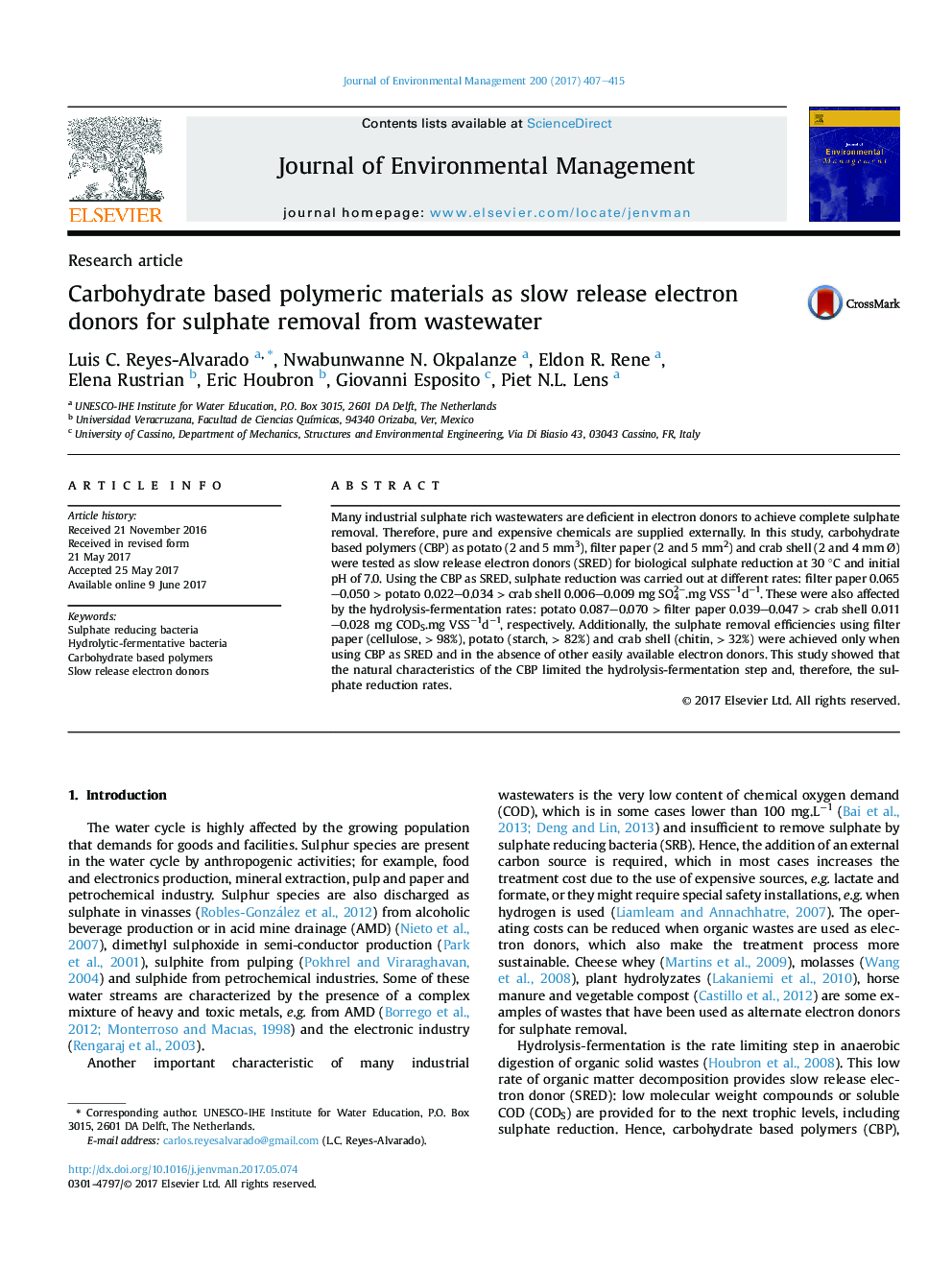| Article ID | Journal | Published Year | Pages | File Type |
|---|---|---|---|---|
| 5116350 | Journal of Environmental Management | 2017 | 9 Pages |
â¢Carbohydrate based polymers can be used as slow release electron donors for sulphate reduction.â¢Potato, paper and crab shell exhibited different hydrolysis-fermentation rates.â¢The hydrolysis-fermentation rates limited the sulphate reduction process.
Many industrial sulphate rich wastewaters are deficient in electron donors to achieve complete sulphate removal. Therefore, pure and expensive chemicals are supplied externally. In this study, carbohydrate based polymers (CBP) as potato (2 and 5 mm3), filter paper (2 and 5 mm2) and crab shell (2 and 4 mm Ã) were tested as slow release electron donors (SRED) for biological sulphate reduction at 30 °C and initial pH of 7.0. Using the CBP as SRED, sulphate reduction was carried out at different rates: filter paper 0.065-0.050 > potato 0.022-0.034 > crab shell 0.006-0.009 mg SO42â.mg VSSâ1dâ1. These were also affected by the hydrolysis-fermentation rates: potato 0.087-0.070 > filter paper 0.039-0.047 > crab shell 0.011-0.028 mg CODS.mg VSSâ1dâ1, respectively. Additionally, the sulphate removal efficiencies using filter paper (cellulose, > 98%), potato (starch, > 82%) and crab shell (chitin, > 32%) were achieved only when using CBP as SRED and in the absence of other easily available electron donors. This study showed that the natural characteristics of the CBP limited the hydrolysis-fermentation step and, therefore, the sulphate reduction rates.
Graphical abstractDownload high-res image (230KB)Download full-size image
